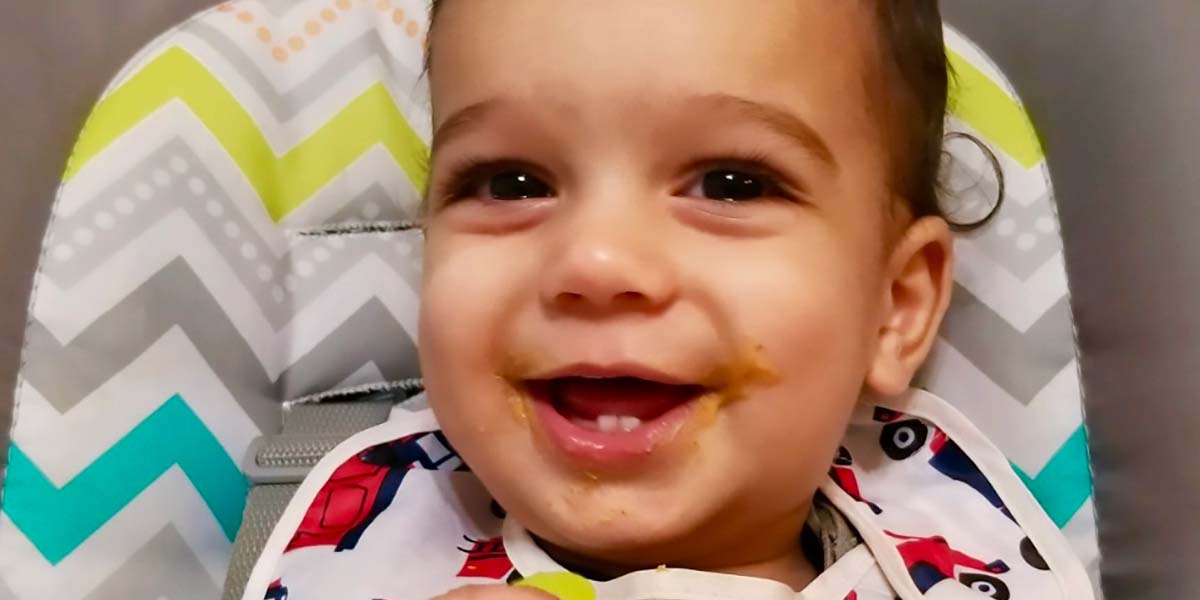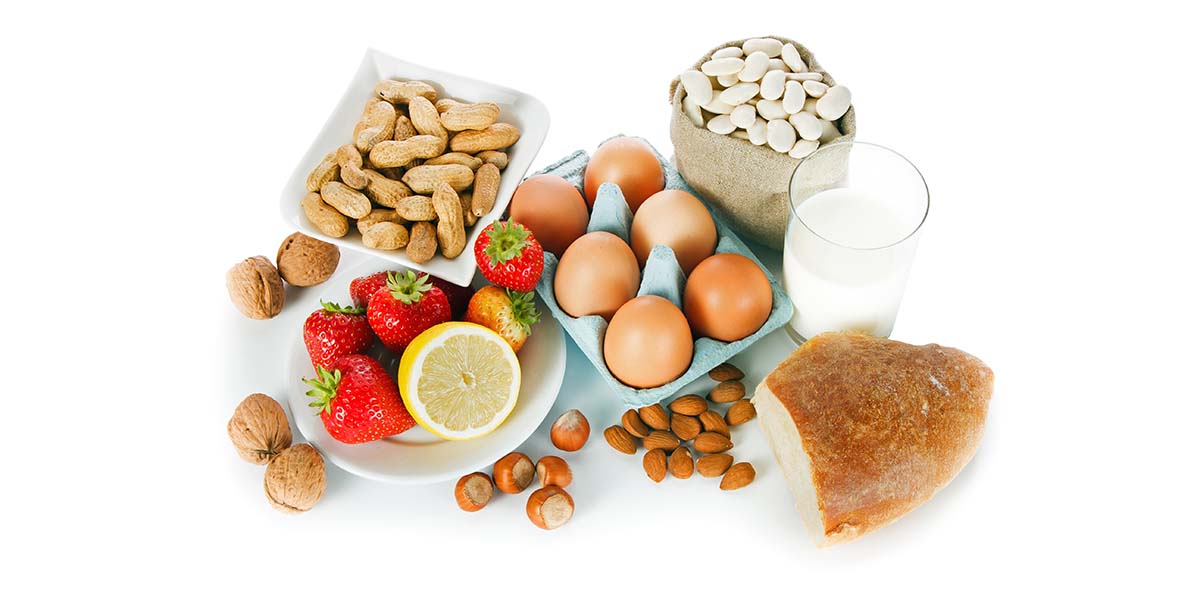When costumed kids appear at your door requesting “Trick or treat!” you know they are…

Introducing Your Baby to Foods
Food introduction
- Introducing your baby to foods can be exciting, but also may cause some anxiety, especially when it comes to allergenic foods.
- If your baby has moderate to severe eczema, it is best to see an allergist before the introduction of allergenic foods.
- Babies are typically ready to start solid food introduction around 5 months of age, however every baby is different.
- Before you start feeding your baby, you want to check in with your pediatrician to make sure your baby is developmentally ready. This usually means that they have good head and trunk/torso control (can sit up well with slight support), and are showing cues that they are ready and interested in eating (watching parents eating, sticking tongue out when parents are eating, trying to grab at table foods, etc).
- It is important that your baby has a good grasp of eating before introducing an allergenic food, so that we don’t confuse normal behaviors of learning how to eat with signs for an allergic reaction (such as spitting out food, or gagging on food).
- I always recommend starting with veggie/fruit purees, and making sure your baby is good at eating these before trying allergenic foods.
- It is extremely rare to develop an anaphylactic-type allergy to vegetables and fruits. However, if your baby has delayed, repetitive vomiting after any food, avoid the food and discuss with an allergist (this may be a different type of food allergy).
- Many babies can develop some redness around the mouth from skin irritation. If a baby develops redness around the mouth that is not raised, and no other rash on the body, and no other symptoms such as vomiting, coughing, or extremely runny nose, it is likely to be irritation.
- One way to prevent this irritation is to apply Vaseline to the lips and around the mouth before feeding. Immediately after feeding, wipe baby’s mouth with a wet wash cloth and re-apply Vaseline, or a gentle moisturizer such as CeraVe, Cetaphil, Vanicream, or Eucerin.
- Once your baby is good at eating purees and/or other food consistencies, we can try introducing allergenic foods!
- The top 9 food allergies are: milk, egg, soy, wheat, peanut, tree nuts (almond, cashew/pistachio, walnut/pecan, hazelnut, Brazil nut), sesame, and fish and shellfish.
- Early introduction of these foods can help prevent development of a food allergy (except fish and shellfish, you can introduce these foods whenever your child is interested).
- In 2017 the National Institute of Allergy and Infectious Disease (NIAID) published the below, “Instructions for Home Feeding of Peanut Protein for Infants at Low Risk of an Allergic Reaction to Peanut”.
- https://www.niaid.nih.gov/sites/default/files/addendum_guidelines_peanut_appx_d.pdf
- Infants at low risk are considered babies without moderate-severe eczema and without egg allergy.
- We can use these recommendations (as copied below with slight edits) to guide our introduction of all allergenic foods.
General Instructions
- Feed your infant only when he or she is healthy; do not do the feeding if he or she has a cold, vomiting, diarrhea, or other illness.
- Give the first feeding at home and not at a day care facility or restaurant.
- Make sure at least 1 adult will be able to focus all of his or her attention on the infant, without distractions from other children or household activities.
- Make sure that you will be able to spend at least 2 hours with your infant after the feeding to watch for any signs of an allergic reaction.
Feeding Your Infant a New Allergenic Food
- Prepare a full portion of one of the allergenic foods. A serving should be about 2-3 teaspoons or more of the allergenic food in an infant-safe form, such as diluted butter, crushed nuts/powder/flour mixed into puree, or liquid (consider NIAID recipe options).
- Offer your infant a small part of the serving on the tip of a spoon (about a pea-sized amount).
- Wait 10-15 minutes.
- If there is no allergic reaction after this small taste, then slowly give the remainder of the allergen-containing food at the infant’s usual eating speed.
- Supervise the infant for the next 2 hours.
- If your baby tolerates the food, keep 2-3 teaspoons in the diet 2-3 times a week.
- After 2-3 days of tolerance of a new food, can introduce another new allergenic food. Once each allergenic food is in the diet, it should be kept in the diet 2-3 times a week, if previously tolerated, can be given at the same time as other allergenic foods.
What are symptoms of an allergic reaction? What should I look for?
- Any of the below symptoms occurring within 2 hours of ingestion of the food. Mild symptoms can include:
- a new rash or a few hives around the mouth or face
- If this occurs, stop giving the food and monitor for progression of symptoms.
- Take photos, and if nothing more severe occurs, avoid the food until consulting your pediatrician or an allergist. More severe symptoms can include any of the following alone or in combination:
- lip swelling
- vomiting
- widespread hives (welts) over the body
- face or tongue swelling
- any difficulty breathing
- wheeze
- repetitive coughing
- change in skin color (pale, blue)
- sudden tiredness/lethargy/seeming limp
- If you have any concerns about your infant’s response, seek immediate medical attention/call 911.
- If your baby has delayed, repetitive vomiting after any food, avoid the food and discuss with an allergist (this may be a different type of food allergy).



